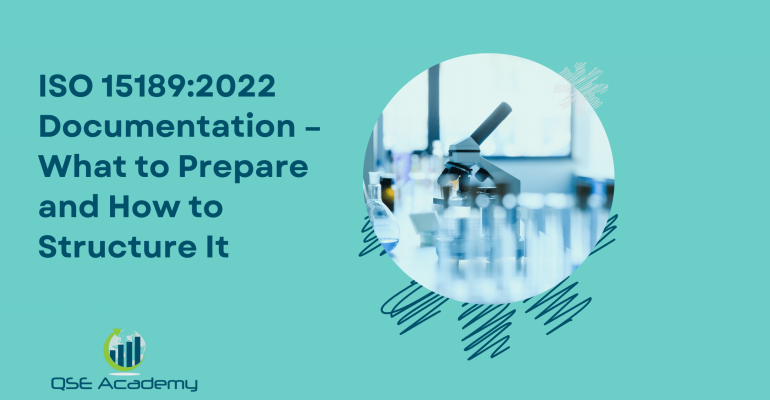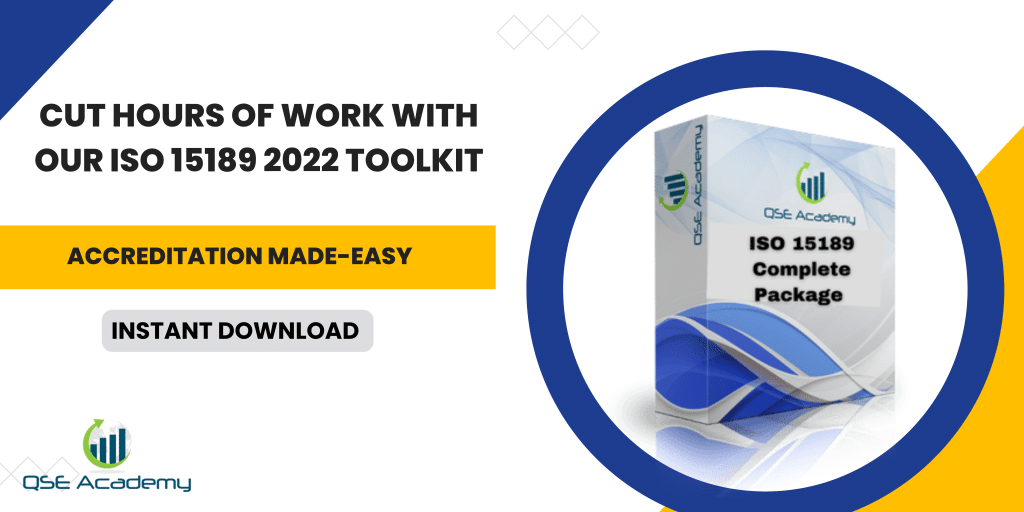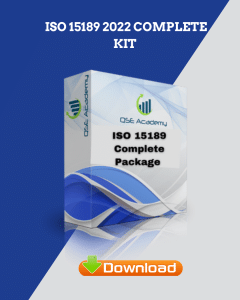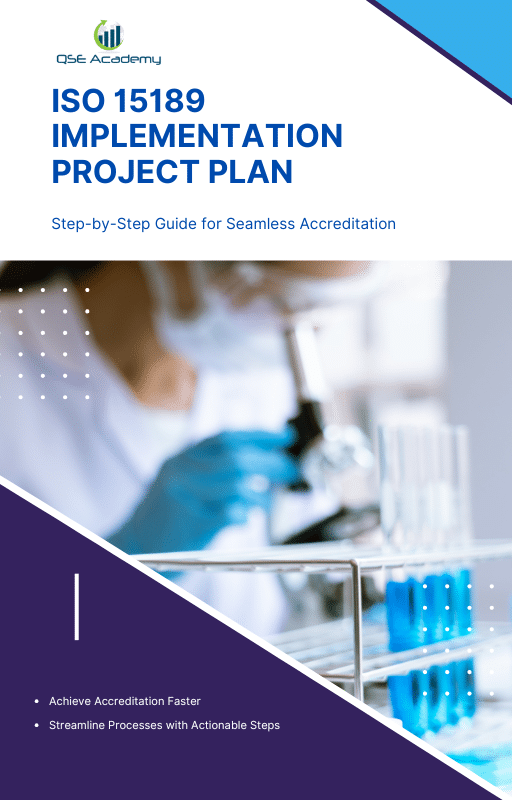ISO 15189:2022 Documentation – What to Prepare and How to Structure It
Last Updated on October 22, 2025 by Hafsa J.
ISO 15189:2022 Documentation: What to Prepare and How to Structure It?
Let’s be honest: when most labs think about ISO 15189 documentation, it’s usually with a sigh. I’ve worked with dozens of labs over the past decade, and the question almost always comes up:
“Do we really need all this?”
Here’s what I’ve found. The problem isn’t that the documentation is complex, but that it’s rarely explained in a way that actually improves your lab management. Most teams end up overwhelmed by unused documents or scrambling to find critical documents the week before an audit.
If this sounds familiar, this guide is for you.
In this article, I’ll walk you through the documentation requirements of ISO 15189:2022. I’ll show you how to prepare your documentation, how to structure it around the updated standard, and how to make it useful, not just compliant.
You’ll discover practical strategies, real-life examples, and expert advice I’ve used with labs of all sizes, from national reference centers to small private clinics. Whether you’re building from scratch or renovating an existing system, you’ll walk away with the essentials and know how to succeed without losing your mind.
Let’s dive in.
Understanding the role of documentation in ISO 15189:2022
Soyons clairs : la norme ISO 15189:2022 ne vous impose pas une montagne de paperasse pour la forme. La documentation a une raison d’être essentielle : aider votre laboratoire à fournir des résultats cohérents et fiables. Elle est là pour guider votre équipe, réduire les erreurs et prouver que vous faites ce que vous dites.
Mais voici le problème : si votre documentation ne reflète pas le fonctionnement réel de votre laboratoire , elle n’aidera pas votre équipe, et elle ne vous aidera certainement pas lors d’un audit.
Ce que la norme ISO 15189:2022 souhaite vraiment voir :
-
Documentation claire et structurée, conforme à la norme mise à jour.
La version 2022 s’aligne sur la structure de haut niveau (HLS) de l’ISO. Elle est donc davantage axée sur les processus et exige que vos documents abordent des thèmes clés tels que le leadership, le risque, la compétence et l’amélioration continue. -
Un équilibre entre procédures écrites et preuves concrètes.
Il ne suffit pas de dire que vous formez le personnel : il faut des documents qui le prouvent. Il ne suffit pas de mentionner une « réflexion axée sur les risques » : il faut une documentation qui montre comment vous évaluez et gérez les risques en temps réel. -
Des documents vivants, pas des classeurs oubliés
L’ISO souhaite s’assurer que votre documentation est utilisée, révisée et améliorée régulièrement, et non pas simplement dépoussiérée une fois par an pour inspection.
Histoire vraie d’un audit récent :
Un laboratoire avec lequel j’ai travaillé disposait d’un excellent manuel qualité. Il paraissait parfait sur papier. Mais lorsque l’auditeur a interrogé un membre du personnel sur la procédure de gestion des variations de température, la réponse ne correspondait pas à ce qui était écrit. Ce simple manque de cohérence a entraîné une non-conformité et de nombreuses confusions.
Comment résoudre le problème ? Nous avons collaboré, simplifié leurs procédures et les avons réécrites avec le personnel qui les utilisait. La conformité a progressé. Les erreurs ont diminué. Et l’audit suivant ? Aucune constatation.
En résumé :
Votre documentation doit faire deux choses :
-
Assurez le bon fonctionnement de votre laboratoire
-
Montrez à l’auditeur que vous avez le contrôle
Si les deux ne fonctionnent pas, il est temps de procéder à une mise au point.
Documents de base requis par la norme ISO 15189:2022
C’est la partie à laquelle la plupart des laboratoires veulent accéder sans hésiter :
« Dites-moi simplement ce que nous devons réellement préparer. »
Très bien. Décomposons-le.
La norme ISO 15189:2022 ne fournit pas de liste littérale de documents, mais exige impérativement que votre laboratoire dispose de procédures , de politiques et de dossiers documentés spécifiques prouvant sa conformité à la norme. Et, bien sûr, il vous sera demandé de les présenter lors de votre audit .
Alors, que devez-vous préparer ?
Voici un aperçu de la documentation de base que tout laboratoire conforme à la norme ISO 15189:2022 devrait posséder :
1. Politique qualité et objectifs qualité
Ces informations doivent être documentées, communiquées et alignées sur la mission du laboratoire. Plus important encore, votre équipe doit savoir de quoi il s’agit, et pas seulement où elles sont publiées.
2. Procédures documentées (SOP)
Cela comprend les processus pour :
-
Collecte, manipulation et analyse des échantillons
-
Étalonnage et maintenance des équipements
-
Formation et compétence du personnel
-
Gestion des risques et mesures correctives
-
Audits internes et revues de direction
-
Contrôle des documents et des archives
3. Registres de preuves
Not just procedures—proof that they’re followed. Think:
-
Training logs and competency assessments
-
Equipment maintenance logs
-
Nonconformity reports and CAPAs
-
Risk assessments
-
Meeting minutes from management reviews
-
Audit reports and follow-ups
4. Risk-Based Documentation
You need evidence that you’ve identified risks, taken action, and continue to monitor them. This could be in the form of a risk register or embedded into operational records.
What I’ve seen in real labs:
One lab had beautifully written SOPs, but no records to show they were being followed. Their maintenance logs were blank, and their training files were outdated. They were doing the work—but they couldn’t prove it. That cost them valuable points during their accreditation audit.
Another lab had fewer procedures but rock-solid records that proved their system was working. That made all the difference.
Quick advice:
Don’t focus only on “what looks good.” Instead, ask:
-
Can we show evidence this is happening?
-
Is it clear who owns each process?
-
If an auditor asks for proof, can we find it in under five minutes?
If you’re nodding “yes,” you’re on the right track.
How to Structure Your Documentation to Match ISO 15189 Clauses
Now that you know what documents you need, the next question is:
How do you organize it all so it makes sense—to your team and to your auditor?
Here’s the reality: you could have every required policy and procedure written, but if your system is a mess—scattered folders, unclear naming, no version control—you’re still going to struggle.
The smart way to structure your documentation?
Build it around the ISO 15189:2022 clause layout. That’s the structure your auditor will follow, and it makes navigating your system way easier.
Here’s how to set it up:
1. Create a Master Document List (or Matrix)
List every document, its type (policy, SOP, record), the clause it supports, owner, version, and last review date. This becomes your central map. And during audits? It’s a lifesaver.
2. Use ISO’s Clause Headings as Your Folder Structure
For example:
-
Clause 4: General Requirements → Impartiality, Confidentiality
-
Clause 5: Structural Requirements → Roles, Responsibilities, Organization
-
Clause 6: Resource Requirements → Equipment, Personnel, Facilities
-
Clause 7: Process Requirements → Pre-examination, Testing, Post-examination
-
Clause 8: Management System Requirements → Documents, Records, Audits, Reviews
This approach keeps everything clean and easy to reference—even for new team members.
3. Standardize How You Name Documents
No more “Final_SOP_v3_NEW.” Use clear, consistent naming like:
SOP-07: Sample Rejection and Logging
FORM-11: Equipment Maintenance Checklist
POL-02: Quality Policy
4. Link Documents to Their Associated Records
Let’s say you’ve got an SOP for internal audits. That SOP should reference the audit checklist and the audit report form. This creates a traceable, audit-friendly trail.
Real story from the field:
I worked with a lab that had excellent procedures—but they were saved under personal folders, misnamed, and scattered across three different drives. The system technically existed, but no one could find anything when it mattered. We moved everything to a single shared drive, restructured by clause, and added a basic document matrix. The next audit? Smooth sailing.
Quick Tip:
Before your next audit, do a “5-minute document test.”
Pick any ISO clause and ask:
-
What procedure supports this?
-
Can I find it?
-
Can I show records that prove we’re doing it?
If you can answer all three—congrats, you’re ahead of most labs.
Make Your Documents Useful, Not Just Compliant
Let’s be real—if your documentation looks great but no one’s using it, it’s not helping anyone. I’ve seen plenty of labs pass audits with overly complex SOPs… only to deal with daily mistakes because staff didn’t actually follow them.
So here’s the goal: make your documents so clear and usable that your team relies on them every day—without dreading them.
Here’s what that looks like in action:
1. Write procedures for real people—not auditors
Ditch the robotic language. Use active voice, direct steps, and language your techs actually use. If your SOP takes three pages to explain how to label a sample, it’s too much.
Example:
Bad: “Ensure compliance with applicable requirements for sample identification.”
Better: “Label each sample tube with the patient’s full name, ID number, and collection time immediately after collection.”
2. Use visuals wherever you can
Flowcharts, diagrams, checklists—these tools help your team grasp the steps faster (and reduce human error). Don’t make them flip through five paragraphs when a one-page flow can do the job.
3. Put documents where they’re actually needed
No one’s going to walk across the building to look up a procedure mid-process. Put printed versions of critical SOPs at workstations—or better yet, digital access on tablets or terminals.
4. Test your documents in the real world
Before finalizing any SOP, have the people who’ll actually use it try it out. Watch what they struggle with. Rewrite based on their feedback. You’ll be amazed at how many “clear” procedures fall apart in practice.
What I’ve seen work:
One lab I supported had a big issue with sample rejection criteria being inconsistently applied. Their SOP was technically correct—but buried in a 10-page document no one read. We turned it into a two-page laminated chart posted at every intake station. Accuracy improved almost overnight.
Quick Tip:
Ask three different staff members where to find your SOP for critical incident reporting. If they all hesitate—or give different answers—your system needs work.
Managing Document Control and Revisions
If you’ve ever had someone use the wrong version of a form—or worse, dig up a five-year-old SOP and follow it like gospel—you already know why document control matters. It’s one of those behind-the-scenes systems that either keeps your lab running smoothly or slowly drives everyone crazy.
And ISO 15189:2022? It expects your document control process to be airtight.
Here’s what good document control looks like:
1. Every document has a unique ID, version number, and issue date
This sounds obvious, but you’d be surprised how many labs have six copies of the same SOP floating around with no clear owner. A consistent naming and numbering system fixes this instantly.
2. You know who owns each document
Each SOP or form should have an assigned “document owner” who’s responsible for updates, accuracy, and making sure it stays relevant. If something changes in your process, they’re the one updating the doc—not guessing who should.
3. You review documents regularly—and track those reviews
Most labs aim for annual reviews, but you should also trigger a review anytime a process changes, a nonconformity is found, or a new risk is identified. And don’t just say it was reviewed—log it, sign it, and file it.
4. You control access—and remove outdated versions
Whether you use a shared drive, a QMS software, or even binders, the golden rule is this: staff should never have access to old or draft versions. One wrong form can undo all your hard work.
A quick story from the field:
A lab I worked with had staff using an old glucose tolerance testing form that didn’t include a new reporting field. It turned out that form was saved on someone’s desktop—never updated when the SOP changed. That led to a reporting error, which triggered a full investigation. The fix? They set up a single-source digital folder with permissions and turned off access to local copies. Problem solved.
Quick Tip:
Set up a simple revision log at the end of every SOP. Include what changed, why, who approved it, and when. This tiny addition makes audits smoother—and gives you full visibility over your document history.
Audit-Ready Tips for Organizing and Presenting Documentation
Let’s be real—having the right documents is only half the battle. The other half is finding them quickly, presenting them clearly, and showing that your team actually uses them. That’s what makes the difference between a stressful audit and a smooth one.
I’ve seen labs with fantastic systems fail to impress assessors—just because they couldn’t locate what they needed in the moment. Let’s avoid that.
Here’s how to make your documentation audit-ready:
1. Organize everything by ISO 15189 clause
We covered this earlier, but it’s worth repeating: when your folders match the ISO structure, auditors can follow your logic. It also shows you understand the standard—not just that you’re following instructions.
2. Separate by type: policy, procedure, record
Use subfolders or tags to differentiate between documents that say what you do (policies), how you do it (SOPs), and proof that you did it (records). This keeps things crystal clear.
3. Practice document retrieval with your team
Pick random clauses and ask staff to locate a document or record tied to it. Time them. Can they find it in under two minutes? If not, simplify your structure or offer more training.
4. Prepare a quick-access file for common audit requests
Have a folder (physical or digital) with copies of your:
-
Quality policy
-
Latest internal audit report
-
Management review minutes
-
Risk register
-
Key SOPs
-
Training logs
Auditors almost always ask for these early—make it easy.
Real-world example:
One lab I helped created a shared folder called “Audit Ready.” Inside? The top 15 most requested documents—updated, clearly named, and ready to go. During their audit, they pulled up everything on-screen within seconds. The assessor even complimented their system before the audit was halfway done.
Quick Tip:
The week before your audit, do a “document dry run.” Ask someone outside your quality team to find five randomly selected documents. If they can do it without help, you’re in great shape.
Pro Tips & Insider Insights: Documentation That Works in Real Labs
These tips come straight from the field—things I’ve seen make a huge difference during real ISO 15189:2022 implementations and audits. Use them to fine-tune your documentation system and make life easier for your team.
Pro Tip 1: Give Documents Clear, Descriptive Titles
Avoid names like “SOP-12 Final NEW.” Instead, use something like:
“SOP-12: Sample Transport and Chain of Custody”
Clear titles make it easier to search, train, and respond during audits.
Pro Tip 2: Assign a Document Owner for Every Major SOP
Each key procedure should have a designated owner—someone responsible for reviewing, updating, and answering questions about it. It builds accountability and avoids last-minute scrambles.
Pro Tip 3: Use a Visual Revision Log at the End of Every SOP
A simple table showing version history, change descriptions, approval dates, and initials can save you during an audit. Auditors love seeing that kind of traceability—and so will you.
Pro Tip 4: Use Color Codes or Watermarks to Flag Drafts vs. Approved Docs
One lab I worked with used a gray “DRAFT” watermark on all documents in development. This eliminated confusion and prevented staff from accidentally using unapproved versions.
Pro Tip 5: Train New Staff with Live Documents, Not Copies
When onboarding new hires, walk them through your actual SOPs—not outdated PDFs or demo versions. It reinforces the importance of document control from day one.
Pro Tip 6: Set Calendar Reminders for Quarterly Document Reviews
Waiting until your next audit to review documentation? That’s asking for trouble. Regular touchpoints (even brief ones) keep your system clean, current, and stress-free when audit time rolls around.
Common Mistakes and FAQs: What Trips Labs Up (and How to Avoid It)
Even labs with the best intentions run into trouble with documentation. The truth is, most nonconformities during ISO 15189 audits don’t come from not having documents—they come from how those documents are managed, used, or misunderstood.
Let’s look at the biggest mistakes I see, followed by the most common questions labs ask when building out their documentation systems.
Top Documentation Mistakes to Avoid
Mistake 1: Copy-Pasting from Another Lab’s Documents
It’s tempting, especially if you’re short on time. But procedures that don’t reflect your actual workflows will get exposed quickly during interviews or record reviews. Customize everything.
Mistake 2: Creating Documents No One Uses
Just because something looks good on paper doesn’t mean it works in real life. If staff can’t follow it, or don’t even know where to find it, it’s not doing its job.
Mistake 3: Letting Version Control Slide
I’ve seen labs fail audits over a single outdated form left in a drawer. If people are using old procedures—or if multiple versions are floating around—you’re risking nonconformities and errors.
Mistake 4: Forgetting to Review and Update Regularly
ISO wants living documents—not ones that haven’t been touched since 2019. Even small changes in workflow, technology, or staffing should trigger a document review.
Frequently Asked Questions
Q1: Does ISO 15189:2022 require specific documents or templates?
No templates, but it does require you to maintain specific types of documented information—like your quality policy, SOPs, training records, audit reports, and evidence of risk-based decision-making. How you document is flexible—as long as it’s clear, accessible, and controlled.
Q2: Can we go 100% digital with our documents?
Yes. ISO allows fully electronic document systems—as long as you’ve got secure access, version tracking, backup, and integrity controls in place. Plenty of labs have gone fully paperless with success.
Q3 : À quelle fréquence devons-nous réviser notre documentation ?
Au moins une fois par an pour les procédures et politiques clés. Cependant, dès qu’un changement de processus, d’équipement, de réglementation ou de constats d’audit survient, vous devez la réviser et la mettre à jour immédiatement. Définissez des rappels et tenez un journal des modifications pour suivre l’ensemble des modifications.
Q4 : Qui doit être impliqué dans la rédaction et la révision des procédures opérationnelles standard (POS) ?
Les personnes qui les utilisent réellement . Les responsables qualité peuvent formater et guider, mais les meilleures POS proviennent des contributions des équipes terrain. Cela améliore la précision des procédures et garantit leur appropriation par le personnel.
Une bonne documentation est plus qu’une simple question de conformité : c’est l’épine dorsale de votre laboratoire.
Soyons honnêtes : la documentation ne passionne personne. Mais s’il y a une chose que j’ai apprise en aidant les laboratoires à mettre en œuvre la norme ISO 15189:2022, c’est bien celle-ci :
Une documentation solide et utilisable facilite tout.
Cela réduit la confusion.
Cela aide vos équipes à faire les choses correctement dès la première fois.
Et lors d’un audit ? C’est votre meilleure défense.
If you’ve ever searched for a form, guessed which version of a standard operating procedure was in effect, or wondered if your team was actually following instructions, you already know how high the stakes are. ISO 15189:2022 doesn’t just require documentation. It requires documentation that reflects your actual practices and proves your lab is on top of things.
Here’s what matters most:
-
Be clear. Use clear language, intelligent layout, and a logical structure.
-
Keep them up to date. Review and update your documents regularly; don’t let them gather dust.
-
Maintain the connection. Make sure your documentation illustrates how your lab actually works, not the image you want to give the auditor.
Ready to take action?
If you’re creating or updating your documentation system, start with a solid structure. Match your files to ISO clauses, create a master document list, and involve your team in reviews.
Need a head start?
Download our free ISO 15189:2022 documentation checklist or book a consultation : we’ll analyze your current system, identify gaps, and help you implement a documentation process tailored to your lab.
You can do this, and if you need help, I’m here to help.
Whether it’s ISO 9001, ISO 22000, or the cosmetics-focused ISO 22716, I’ve spent my career I’m not here to call myself an expert—I prefer “enthusiast” because I truly love what I do. When I’m not writing about standards, you’ll probably find me playing Piano 🎹, connecting with people, or diving into my next big project💫. I’m an engineer specialized in the food and agricultural industry
make ISO standards less intimidating and more approachable for everyone.
turning complex jargon into clear, actionable steps that businesses can actually use.
There’s something incredibly rewarding about helping people navigate food safety and quality management systems
in a way that feels simple, practical, and even enjoyable.
I have a Master’s in QHSE management and over 12 years of experience as a Quality Manager
I’ve helped more than 15 companies implement ISO 9001, ISO 22000, ISO 22716, GMP, and other standards
My clients include food producers, cosmetics manufacturers, laboratories, and service companies
I believe quality systems should be simple, useful, and efficient.













